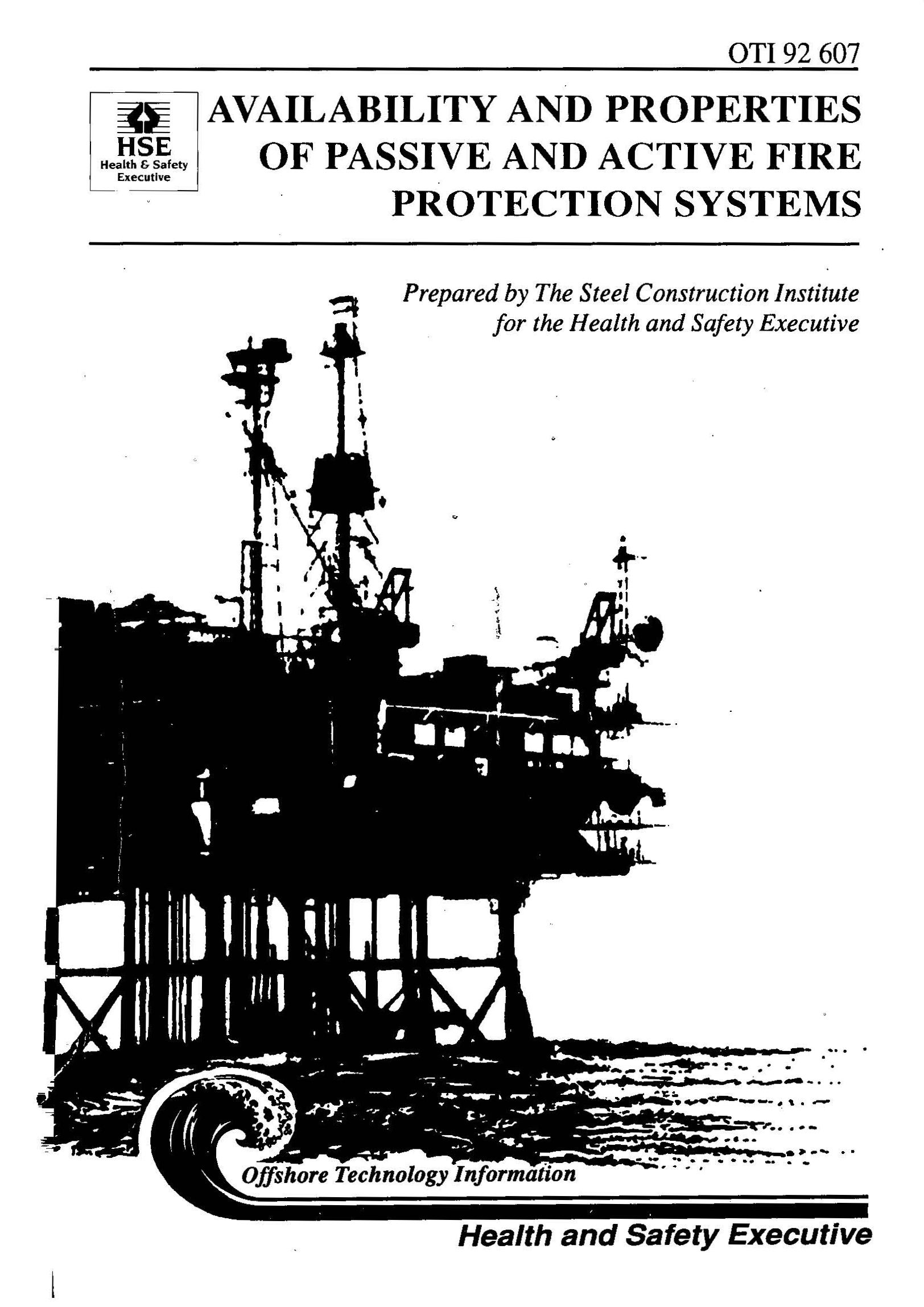HSE OTI 92 607
Availability and properties of passive and active fire protection systems
Work Package FR4
BFETS Phase 1

FABIG Members: Log-in to access all FABIG resources LOG IN
SUMMARY
This report contains a selection of the various types of passive fire protection products which are currently being used on offshore structures. For active fire protection products, proprietary products have not been listed, only the current status is reviewed.
Passive fire protection products can be classified into the following generic types: cementitious or vermiculite sprays, intumescent, or mineral or ceramic fibres. However, these generic products in many cases form only a component part of the total passive fire design system.
Certification permitting the use of these passive fire protection products in a given situation offshore requires either a Lloyd's Register of Shipping 'A' fire class rating or a Det Norske Veritas 'H' class fire rating, depending on whether the installation is in UK or Norwegian waters, respectively.
Data derived from traditional furnace-based fire tests form the basis for current passive fire protection design. However, these furnace based fire tests do not simulate conditions experienced in real fires, whether these fires are onshore cellulosic fuelled fires or offshore hydrocarbon fuelled fires.
The introduction of additional, although non-standard, fire tests simulating fires offshore is providing the designer with further information about the behaviour of these products. Additional fire dependent tests include:
- The impingement of jet fires onto protected and unprotected structural components;
- The effects of erosion due to unignited gas jets on passive fire protective materials;
- The testing of the passive fire protection integrity following the effects of explosion sustained by the passive fire protection.
Active fire protection systems are still required to be designed for compliance to inadequate codes, usually SI 611 and its guidance notes. However the new draft D.En guidance document is being updated and proposes to classify different water application rates for specific fire situations. Until the guidelines are substantially improved, designers will need to adapt their designs to meet scenario-based requirements, within the limits of code compliance.
Fire protection systems can help mitigation of fire effects in offshore platforms, and can also help to maintain emergency exit routes. There is an increasing awareness of the potential of water-based schemes for improving structural fire endurance. However, the effects of fire on the structure have to be calculated and what mitigating effects are likely to result from the use of the water-based systems determined.
The full report is publicly available from the HSE Website at www.hse.gov.uk/research/otipdf/oti92607.pdf.
Online purchase options:
Non-Members of FABIG are able to purchase PDF copies of the reports.